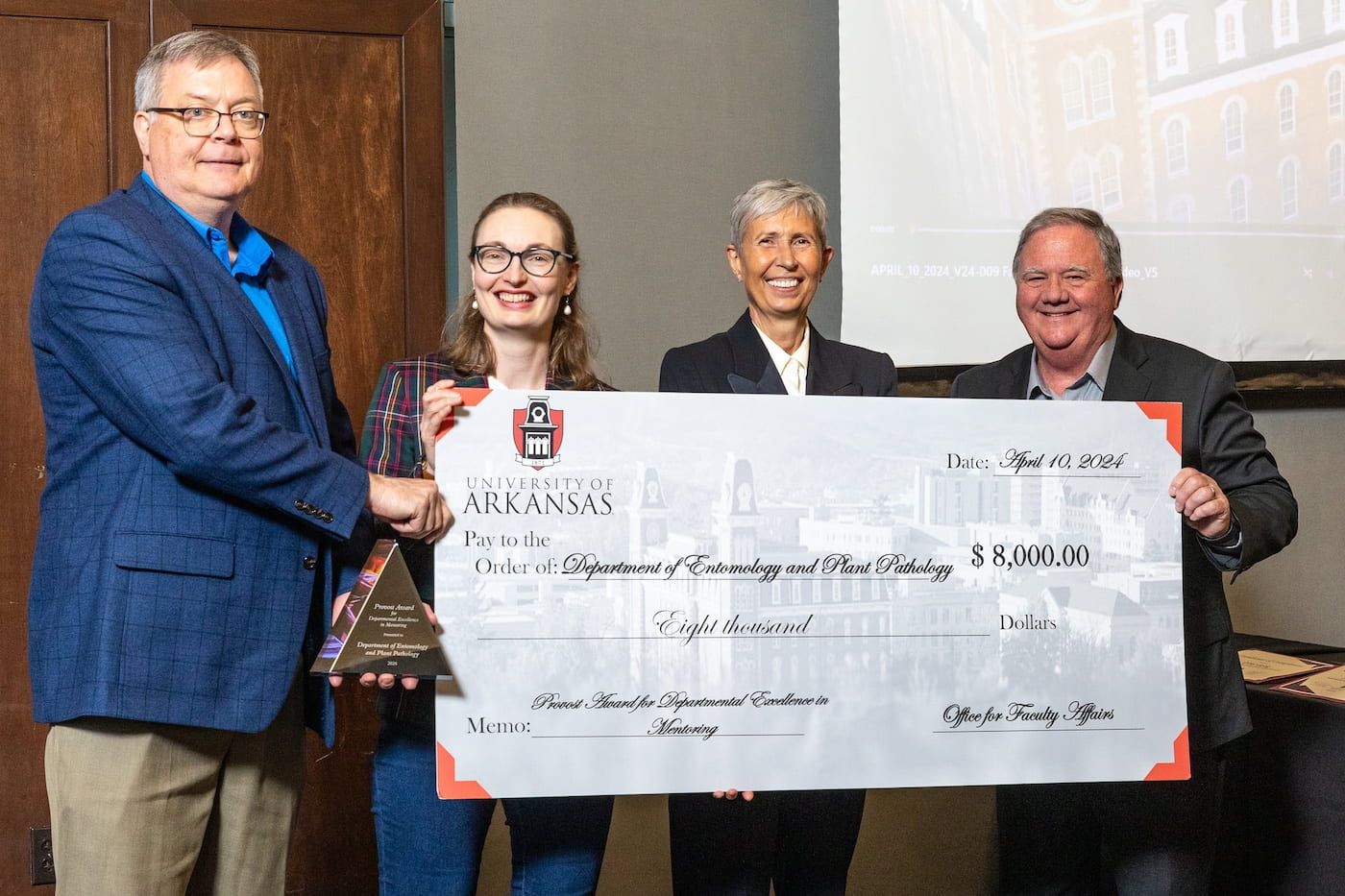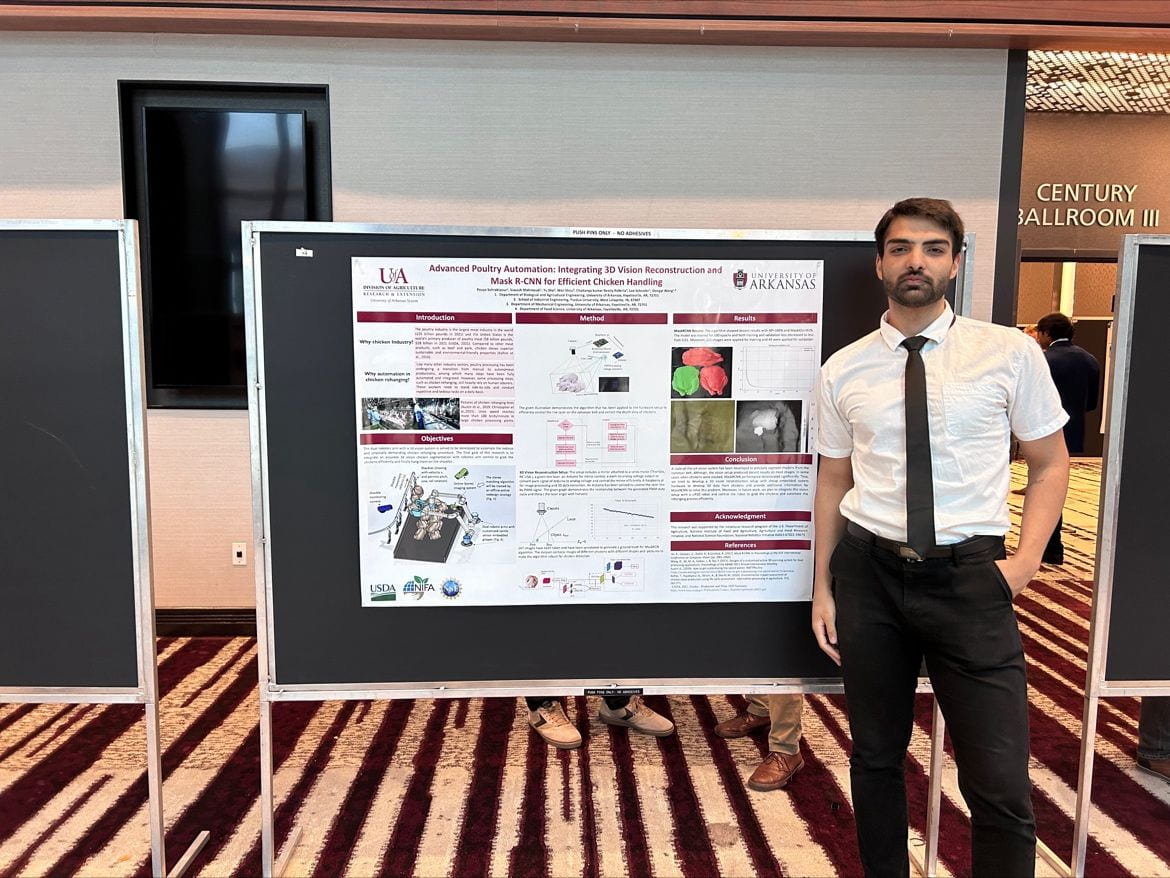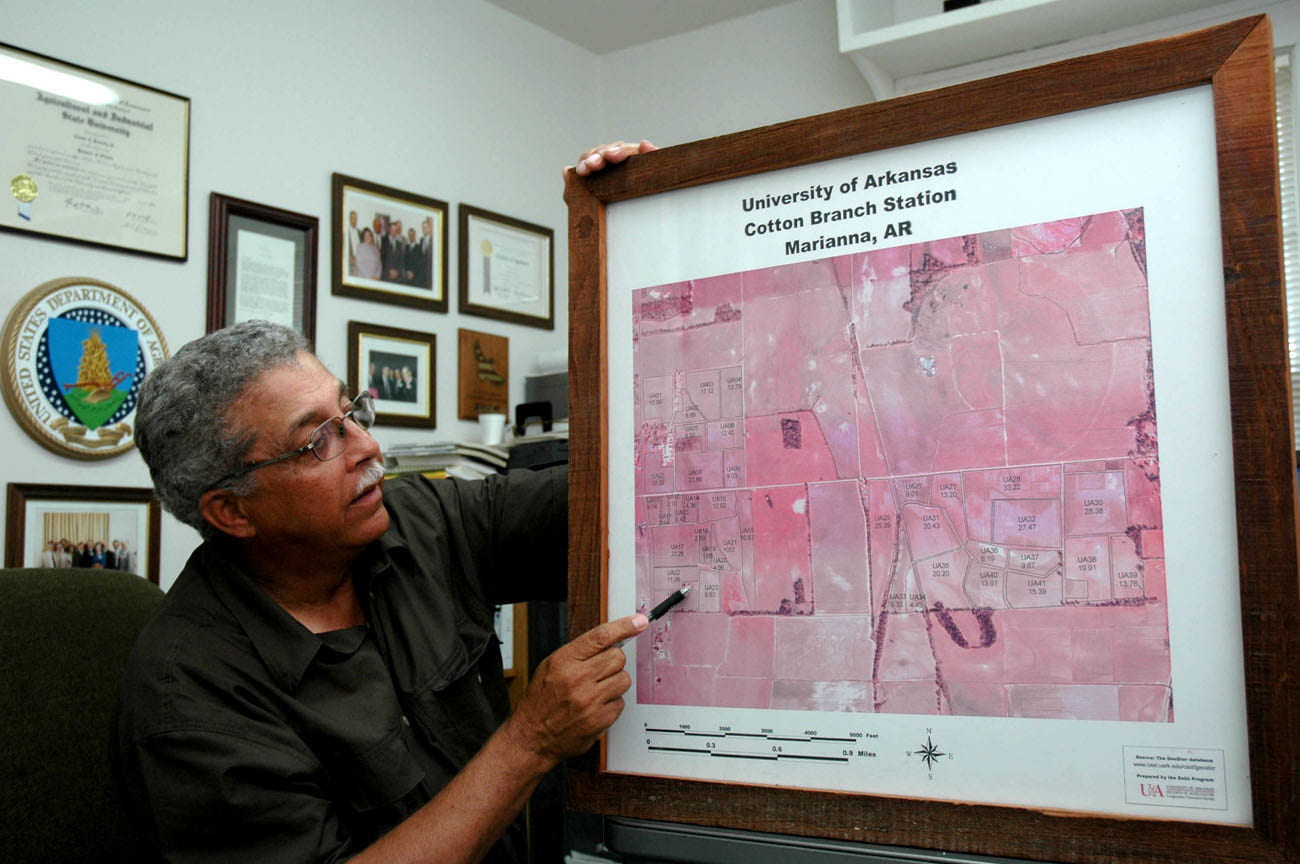New Researcher Works the Intersection of Statistics, Biology, Computer Science
Rich Adams joins Agricultural Statistics Laboratory, entomology and plant pathology department
By Fred Miller – Feb. 17, 2023
NEW FACULTY — Rich Adams joins the faculty of the Arkansas Agricultural Experiment Station and the Dale Bumpers College of Agricultural, Food and Life Sciences as an assistant professor of agricultural statistics. (U of A System Division of Agriculture photo by Fred Miller)
MEDIA CONTACT
Fred Miller
U of A System Division of Agriculture
Arkansas Agricultural Experiment Station
479-575-4732 | fmiller@uark.edu
@AgNews479
FAYETTEVILLE, Ark. — Rich Adams builds new statistical algorithms to make sense of the biological data from DNA, RNA, proteins and other complexities of biology.
If the terminology puzzles you, don’t worry. That’s why Adams is here.
Adams recently joined the Agricultural Statistics Laboratory and the department of entomology and plant pathology as an assistant professor of agricultural statistics at the Arkansas Agricultural Experiment Station. AAES is the research arm of the University of Arkansas System Division of Agriculture. He also has a teaching appointment in the University of Arkansas’ Dale Bumpers College of Agricultural, Food and Life Sciences where he will teach statistics and data science courses.
“Living organisms can be messy,” Adams said. “It can be difficult to tease out the knowledge from the noise when studying them.”
His goal is to build statistical frameworks to examine the complex biological data of life and avoid the biases that can lead researchers astray. Essentially, he is building practical models that help research collaborators explore the secrets of life and how it works from molecules to entire organisms and species.
“One of my favorite quotes is from (British statistician) George Box, ‘All models are wrong but some of them are useful,” Adams said
Adams is building a research program built on the intersection of biology, statistics and computer science to understand the different levels of biological systems and how they work together to build living organisms. Recently, he has been working on hybridization. “What happens when genomes collide?” he said. “These are very complex interactions. Some genes play well together when mixed in a hybrid, and other genes do not.”
He’s working on methods to test hypotheses about processes that influence genetic variation that can help inform predictions about how parts of genetics interact and where breeding activities may lead.
“When we understand something about the underlying biology, we can formulate better hypotheses and build better predictions,” Adams said.
“Another major research component of my lab is focused on invasive species,” Adams said. “How do they spread and adapt to new environments so quickly, and how do they become such effective agricultural pests in the process?”
To answer these questions, Adams is applying new predictive methods for analyzing large-scale molecular data. “If we hope to control and mitigate their impacts, we need to study invasive species as remarkable examples of ecological and evolutionary success.”
Adams is a native of Missouri and grew up near Houston, Texas. He earned his doctorate in quantitative biology at the University of Texas, Arlington, where he received an award of excellence for graduate research. He earned a bachelor’s degree in cell and molecular biology at Stephen F. Austin State University.
Before joining the Division of Agriculture this year, he was an assistant professor of bioinformatics at Georgia College and State University. Before that, he was a postdoctoral research fellow at Florida Atlantic University in the department of electrical engineering and computer science.
He is a visiting data scientist at both the University of Memphis and the University of Texas, Arlington.
Adams said he’s excited about conducting high-impact science with colleagues at the Arkansas Agricultural Experiment Station.
“I’m looking forward to fun collaborations between people with different scientific approaches, perspectives and disciplines to find creative solutions to major challenges in agriculture and biosciences,” Adams said. “Teamwork is one of the best ways to find answers to your questions.
“Science is fun,” he said, “especially in collaboration.”
Adams and his wife, Emily May, are expecting their first child in June.
To learn more about the Division of Agriculture research, visit the Arkansas Agricultural Experiment Station website: https://aaes.uada.edu. Follow us on Twitter at @ArkAgResearch and Instagram at @ArkAgResearch.
To learn about Extension Programs in Arkansas, contact your local Cooperative Extension Service agent or visit https://uaex.uada.edu/. Follow us on Twitter at @AR_Extension.
To learn more about the Division of Agriculture, visit https://uada.edu/. Follow us on Twitter at @AgInArk.
About the Division of Agriculture
The University of Arkansas System Division of Agriculture’s mission is to strengthen agriculture, communities, and families by connecting trusted research to the adoption of best practices. Through the Agricultural Experiment Station and the Cooperative Extension Service, the Division of Agriculture conducts research and extension work within the nation’s historic land grant education system.
The Division of Agriculture is one of 20 entities within the University of Arkansas System. It has offices in all 75 counties in Arkansas and faculty on five system campuses.
The University of Arkansas System Division of Agriculture offers all its Extension and Research programs and services without regard to race, color, sex, gender identity, sexual orientation, national origin, religion, age, disability, marital or veteran status, genetic information, or any other legally protected status, and is an Affirmative Action/Equal Opportunity Employer.

NEW FACULTY — Rich Adams joins the faculty of the Arkansas Agricultural Experiment Station and the Dale Bumpers College of Agricultural, Food and Life Sciences as an assistant professor of agricultural statistics. (U of A System Division of Agriculture photo by Fred Miller)
MEDIA CONTACT
Fred Miller
U of A System Division of Agriculture
Arkansas Agricultural Experiment Station
479-575-4732 | fmiller@uark.edu
@AgNews479




